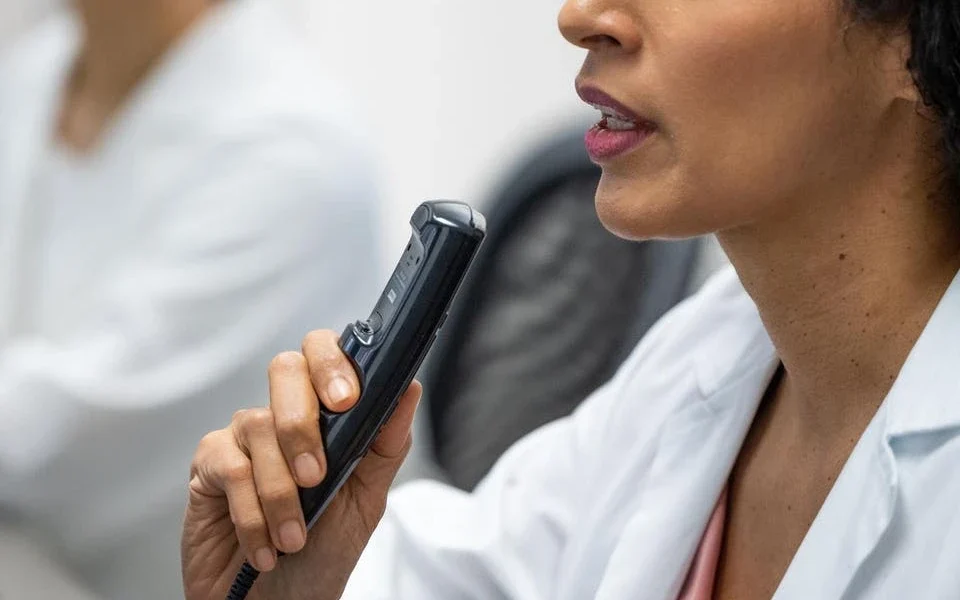The Cumbersome Nature of Clinical Documentation
A physician uses a mic to dictate patient notes. Documentation is one of the most cumbersome aspects of practicing medicine. A published study elicited responses from 1500+ medical professionals across 24 specialties, indicating that nearly 92% of them believed documentation obligations were onerous and excessive.
73% shared that documentation burdens had a net negative impact on patient care. The digitization of medical records has made the overall healthcare delivery ecosystem and process better, although data interoperability across electronic medical record (EMR) systems remains a challenge.
The Burden of Documentation
The process of documentation has become incredibly cumbersome; many clinicians and staff emphasize that documentation is one of the hardest aspects of patient care. A study found that 58% of respondents disagreed that the time spent documenting was appropriate and did not reduce time spent with patients.
Physicians were spending nearly 1.77 hours outside of office hours to complete documentation, highlighting the immense burden placed on healthcare professionals.
The Limitations of Current Solutions
One of the widely used solutions for reducing documentation burden has been the employment of medical scribes. However, scribes face scalability limitations and often require clinicians to spend additional time correcting their work.
This has led to the search for more efficient and scalable alternatives in the healthcare industry to address the challenges related to clinical documentation.
The Rise of Ambient Dictation Technology
Ambient dictation technology utilizes speech-to-text technology to translate conversations into written documentation. With the rapid advancements in artificial intelligence technology, this process has become powerful, accurate, accessible, and scalable.
One of the pioneers in this space is Augmedix, offering AI-powered ambient medical documentation software with a range of products, including Augmedix Go and Augmedix Live.
The Benefits of Augmedix’s Ambient Dictation Solutions
Augmedix Go leverages the latest AI technology and natural language processing to capture clinician-patient conversations and create medical note drafts. The software allows clinicians to review and make necessary modifications, ensuring accuracy and completeness of documentation.
Furthermore, Augmedix’s software includes a “bidirectional nudge” functionality to prompt clinicians about specific parameters during patient encounters, enhancing thoroughness and completeness of conversations.
The Success of Ambient Dictation Technology in Healthcare
Augmedix has witnessed significant success and forged strategic partnerships, including a collaboration with HCA to streamline hospital workflows. The technology has been piloted in emergency departments, demonstrating its potential to transform point-of-care documentation and improve overall patient care.
Furthermore, the integration of Google Cloud‘s Med-PaLM 2 is expected to further enhance the capabilities and impact of Augmedix’s technology in reducing clinician documentation burden and optimizing workflows.
Challenges and Future Prospects
Ambient dictation technology is rapidly gaining traction in the healthcare industry, with increased competition and growing emphasis on patient data privacy and security. Companies like Nuance and DeepScribe are making significant strides in developing impactful products.
However, challenges related to efficacy, accuracy, scalability, and patient data privacy need to be addressed. If developed with utmost priority on patient safety and privacy, this technology holds immense potential to transform the healthcare delivery process and alleviate documentation burdens on clinicians.
Source: forbes








No Comments